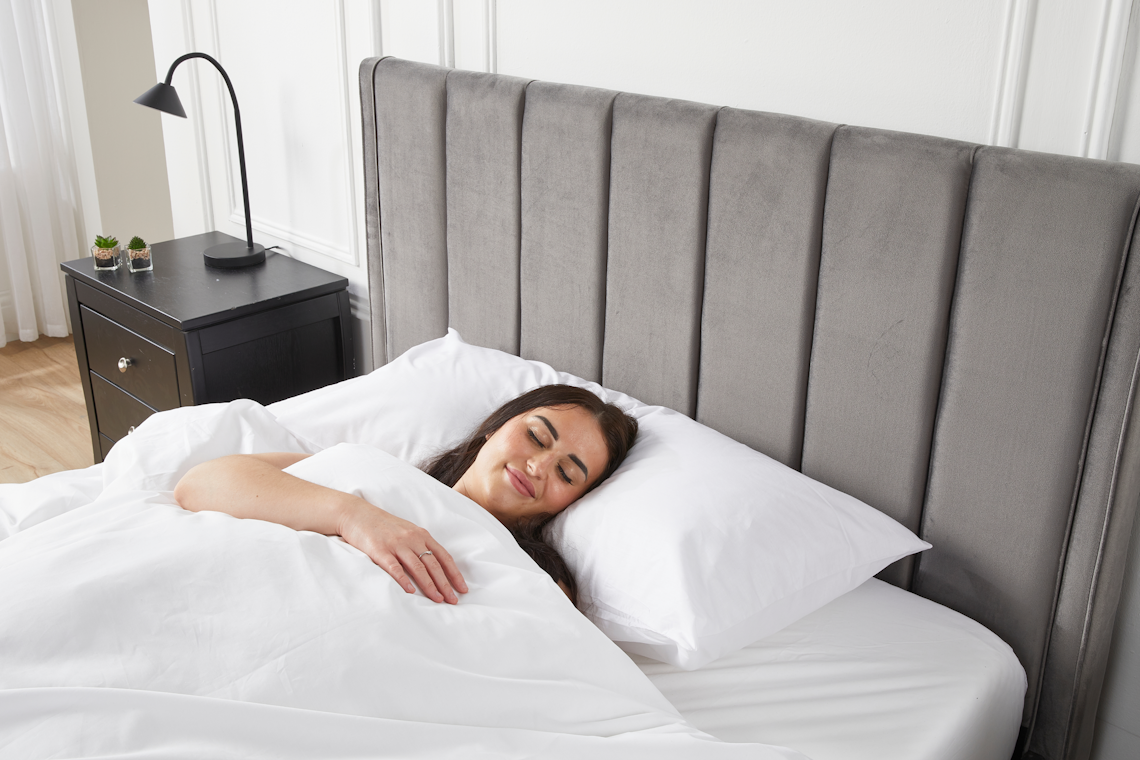30 Jun 2025

How to Fall Asleep Fast
08 Nov 2023
Falling asleep quickly can be a challenge for many people, especially in today's fast-paced, technology-driven world. Tossing and turning in bed can be frustrating, but fortunately, there are tried and tested methods that can help you doze off faster. Understanding the factors that affect your sleep, such as your sleep environment, habits, and stress levels, can lead to a more restful night and contribute to better overall health.
It's important to grasp the basics of sleep cycles, as understanding how your body transitions through different stages of sleep will enable you to optimize your bedtime routine. Additionally, techniques such as relaxation exercises, breathing techniques, and sleep hygiene adjustments can have a significant impact on your ability to fall asleep faster.
Incorporating quick and easy methods for falling asleep into your daily life can be transformative. Small changes can lead to more restorative sleep, better mood and well-being, and increased productivity throughout the day. Ready to improve your nights? Read on to discover the best strategies for falling asleep fast.
Key Takeaways
- A solid sleep environment and habits set the foundation for falling asleep quickly.
- Being aware of your body's natural sleep cycles and adapting to them can improve sleep quality.
- Incorporating relaxation and breathing exercises can help reduce stress levels and promote faster sleep onset.
Understanding Sleep Cycles
Circadian Rhythm
Your circadian rhythm is a 24-hour internal clock that regulates various physiological processes, including your sleep-wake cycle. It is influenced by the amount of daylight and darkness your body is exposed to. To maintain a healthy circadian rhythm, it is essential to keep a consistent sleep schedule, meaning you should try to go to sleep and wake up at the same time each day, even on weekends. Exposure to natural daylight, especially in the morning, can also help to regulate your circadian rhythm and improve sleep quality.
Sleep Stages
Sleep occurs in several distinct stages that form a complete sleep cycle:
- Stage 1: This is the initial phase of light non-REM sleep during which your heart rate, breathing, eye movements, and brain waves begin to slow down. It's a brief transitional period between wakefulness and sleep, lasting only a few minutes.
- Stage 2: In this stage of non-REM sleep, your muscle activity and eye movement decrease, while your body temperature drops, preparing you for deep sleep.
- Stage 3: This is the deep sleep stage, also known as slow-wave sleep. Your brain waves slow down even further, and it's difficult to be awakened during this stage. Deep sleep is necessary for your body to restore and repair itself.
- REM (Rapid Eye Movement) Sleep: Characterised by rapid eye movement, increased heart rate and breathing, and vivid dreams, REM sleep is crucial for memory consolidation and learning.
Throughout the night, your body completes multiple sleep cycles, each lasting approximately 90 minutes. To improve the quality of your sleep, it is crucial not to disrupt these cycles, as they impact your physical and cognitive well-being. Practicing good sleep hygiene, such as creating a relaxing bedtime environment and having a consistent sleep schedule, will ensure your sleep cycles remain unbroken and help you to fall asleep faster.
Quick Techniques for Falling Asleep
Relaxation Techniques
One of the most effective ways to fall asleep quickly is through relaxation techniques. Breathing exercises can help calm your mind and body, promoting a faster onset of sleep. Try the 4-7-8 method: inhale for 4 seconds, hold your breath for 7 seconds, and exhale for 8 seconds. Repeat this process several times until you feel more relaxed.
Progressive muscle relaxation is another technique that can help: starting from your toes, tense each muscle group for a few seconds, then release and move on to the next muscle group. Work your way up to your head, leaving your body feeling relaxed and prepared for sleep.

Optimising Sleeping Environment
Your sleeping environment plays a significant role in how quickly you can fall asleep. Here are some tips to create the ideal environment for sleep:
- Temperature: Ensure your room is cool, ideally between 16-18°C (60-65°F).
- Darkness: Invest in blackout curtains or a sleep mask to block out any light.
- Noise: Use a white noise machine, earplugs, or ambient music to help block out unwanted sounds.
- Comfort: Make sure your mattress, pillows and duvet are comfortable, and use bed linen that helps regulate body temperature.
Creating a Bedtime Ritual
Establishing a consistent bedtime routine can signal to your brain that it's time to sleep, making it easier to drift off quickly. Some elements of a bedtime ritual might include:
- Turning off electronic devices at least one hour before bed. The blue light emitted by screens can interfere with your natural sleep cycle.
- Reading a book or practising meditation to relax your mind.
- Take a warm bath or shower 1-2 hours before bedtime to help with thermoregulation.
- Limiting caffeine intake and avoiding large meals in the hours leading up to bedtime.
- Sticking to consistent sleep and wake times, even on weekends, to help regulate your body's internal clock.


